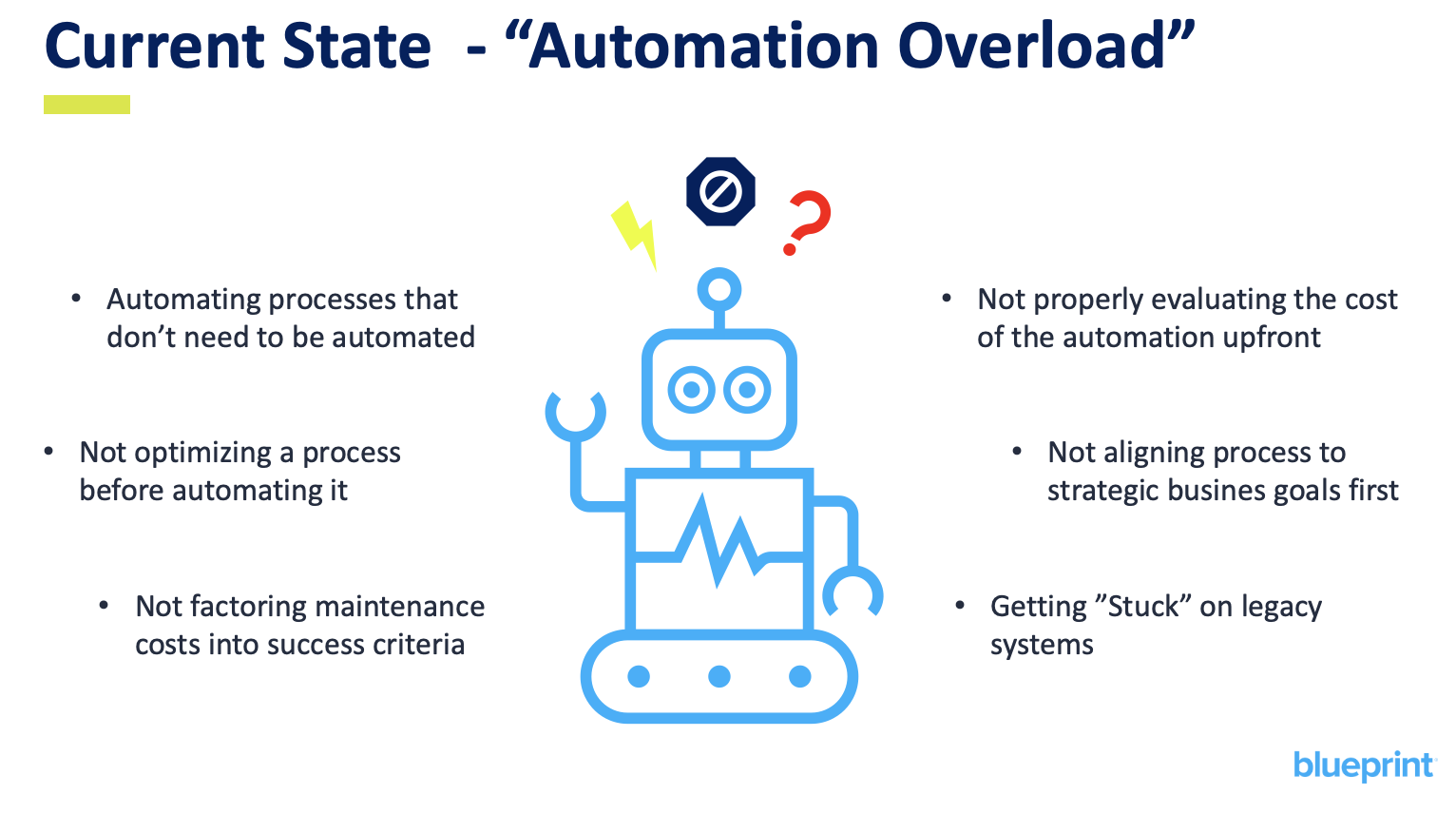What is Process Debt and How to Reduce It
As more organizations dive into process analysis, process improvement, and process modernization efforts like automation, they are quickly realizing that they have a lot of process debt.
Not to be confused with the well-known term ‘technical debt,’ process debt refers to something entirely different yet fundamentally related because they both cause organizations to lose money through inefficiencies and rework if they go unaddressed.
What is Process Debt?
Process debt refers to inefficiencies, waste, and redundancies that have accumulated in workflows over time.
Technical debt has to do with legacy code, outdated design elements, and lingering bugs in solutions and products that go unaccounted for as product teams prioritize speed and product delivery but will one day have to confront and rectify. Similarities can be drawn with process debt, however, the latter has everything to do with workflows yet is still a consequence of patchwork fixes.
In some cases, process debt is accrued because inefficient, yet seemingly convenient workarounds have been applied to processes. In other cases, it results from a lack of commitment to continuous process improvement and business process analysis.
Automation is an excellent example where there is ample inefficiency leading to an accumulation of debt. This is because many organizations have treated automation as a “set it and forget it” technology; they raced to automate everything possible and left the automation to do its work without revisiting it.
Now, a lot of companies find themselves not knowing what they have in their automation estate. Many have even gone and automated things that already existed, creating redundancy in their portfolio. The consequences of which can be staggering.

The Consequences of Process Debt
Naturally, the by-product of process debt is inefficiency, a lack of quality, and inflated costs. Simply put, inefficient processes with a lot of waste, workarounds, and redundancies cost you money.
For example, in the Value Map Assessments Blueprint has performed to date – a service where Blueprint delivers a thorough assessment of your automation portfolio with our technology, providing recommendations on where you can improve to reduce operational costs while optimizing your entire automation estate for higher returns – we’ve found that 20-30% of an organization’s automated process landscape is redundant.
The resources lost on the costs of automation maintenance on those redundancies are gut-wrenchingly high.
In another case, again, as a result of Blueprint’s Value Map Assessment, a customer was able to see that one of their automated processes was costing them upwards of $1,000,000 to maintain, support, and operate. The same process was delivering only $300K in business value. Because of Blueprint’s service, they decided to retire that automation and revert to manual execution because the cost-benefit analysis made more sense, and they’re no longer losing $700K on one process alone.
With those figures, it’s not a surprise that so many organizations want to remove inefficiencies in their processes, but the question remains, how do we reduce process debt?
How to Reduce Process Debt

A lot of commentary points to automation as the solution to eliminate process debt, but that simply isn’t the case at all. Automation is actually a significant contributor to an organization’s rise in process inefficiency, as we explained earlier.
In the rush to automate and realize the lofty returns automation promised, many organizations didn’t bother to optimize their processes before automating them, or they automated processes that had no business being automated because of a variety of reasons like low utilization or high complexity.
A lot of the time, process inefficiencies are also a result of turnover. The process owners or the employees that build the automations leave the company and the process knowledge they possess follows them out the door, leading to new employees building the same automations or components of them because no one has a full understanding of their complete automation estates.
Logically, the first step to improving processes is understanding what you have.
Before you can devote the time and effort to continuous process improvement, you must first know what you have in your arsenal of business processes.
Capturing and documenting your business processes is naturally the first step before applying business process analysis. It’s a lengthy process yet incredibly valuable in the short and long term, but what if there was a way to make that documentation and analysis instant?
The good news is, there is.
Blueprint provides a Value Map Assessment of your entire automation estate in a matter of days instead of the months it would take you or a major consultant to do the same, and the best part, at a much more cost-effective price point.
Using the Blueprint platform, we’re able to uncover all the automations you have, identify where there are redundancies and inefficiencies and provide actionable recommendations on how to remove them to reduce the total cost of automation and increase returns.
Our Value Map Assessment is also able to assess and report on the complexity of your automations and indicates where they are unnecessarily complex, all at the granular process level and from a high point of view as well.
To learn more, download the Blueprint Value Map Assessment brochure, and if you’re interested in a Value Map Assessment right now or speaking to one of our experts to learn more, sign up for a free consultation here.
Share this
Recent Stories

5 Process Metrics You Need for Better Business Process Analysis

Business Process Reengineering: It’s Back and More Important Than Ever




